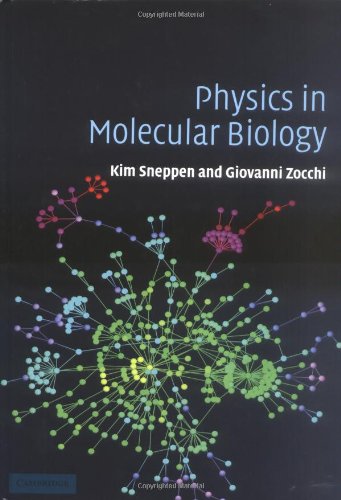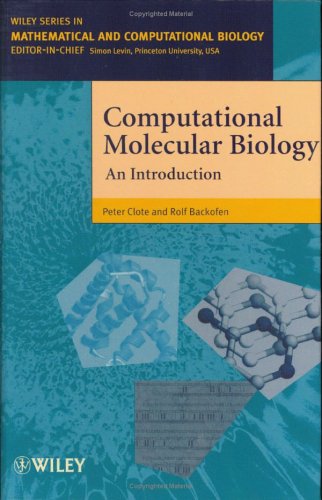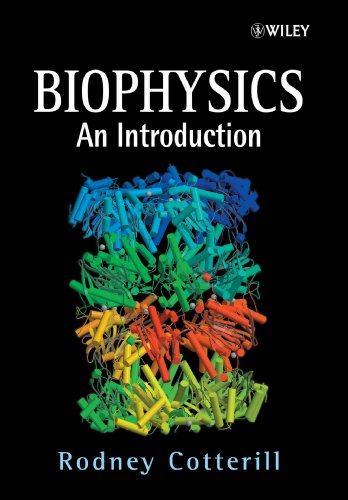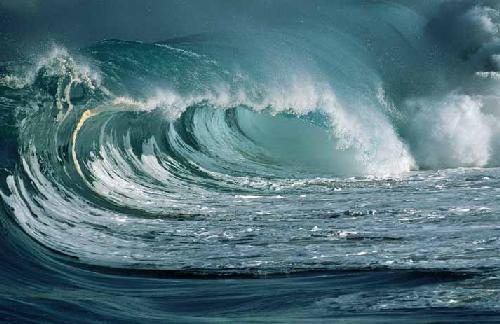Kim Sneppen, Giovanni Zocchi0521844193, 9780521844192, 9780511127977
Table of contents :
Cover Page……Page 1
About the Book……Page 3
ISBN 0521844193……Page 6
Contents……Page 7
Preface……Page 9
Introduction……Page 11
1 What is special about living matter?……Page 14
Further reading……Page 17
2 Polymer physics……Page 18
Persistence length of a polymer……Page 21
Random walk and entropic forces……Page 24
Homopolymer: scaling and collapse……Page 28
DNA collapse in solution……Page 40
Helix–coil transition……Page 42
Collapse versus helix formation……Page 49
References……Page 52
Further reading……Page 53
DNA……Page 54
RNA……Page 69
Manipulating molecular information……Page 73
References……Page 83
Further reading……Page 84
General properties……Page 87
The amino acids……Page 90
Protein primary structure……Page 93
Secondary and tertiary structure……Page 95
Forces that fold proteins……Page 98
Hydrogen bonds are responsible for secondary structure formation in proteins,……Page 99
References……Page 102
Further reading……Page 103
5 Protein folding……Page 105
Calorimetry: denaturation by heating……Page 106
Folding–unfolding rates: m-values……Page 111
Single point mutations: φ-value analysis……Page 114
Models……Page 116
Designability of structure = number of sequences that have the structure……Page 117
References……Page 132
Further reading……Page 134
Molecular motors: energy from ATP……Page 137
Molecular motors: ratchet mechanism……Page 141
The cytoskeleton: motion by polymerization……Page 145
References……Page 152
Further reading……Page 153
7 Physics of genetic regulation: the λ-phage in E. coli……Page 156
Transcription and translation in numbers……Page 157
The genetic switch of the λ-phage……Page 161
Using bacteria to count phages……Page 166
Chemistry as statistical mechanics……Page 173
Non-specific binding to DNA……Page 180
DNA looping……Page 182
Timescales for target location in a cell……Page 188
Facilitated target location……Page 193
Traffic on DNA……Page 197
Stability and robustness……Page 199
The 186 phage……Page 209
Other phages……Page 210
References……Page 213
Further reading……Page 215
8 Molecular networks……Page 219
Broad degree distributions in molecular networks……Page 223
Analysis of network topologies……Page 230
Communication ability of networks……Page 233
Elementary dynamics of protein regulation……Page 237
The heat shock network: an example of a stress response system……Page 239
Bacterial chemotaxis: robust pathways and scale invariant greed……Page 247
References……Page 251
Further reading……Page 252
Evolution and evolvability……Page 255
Adaptive walks……Page 258
Quasi-species model……Page 261
Neutral evolution……Page 263
Molecular evolution of species……Page 265
Punctuated equilibrium and co-evolution……Page 268
Evolution of autocatalytic networks……Page 278
Evolution of evolvability……Page 281
References……Page 284
Further reading……Page 286
Thermodynamics from statistical mechanics……Page 290
Dynamics from statistical mechanics……Page 296
Diffusion: microscopic model……Page 298
Fluctuation–dissipation theorem……Page 300
Kramers’ formula……Page 303
Glossary……Page 307
Index……Page 318







Reviews
There are no reviews yet.